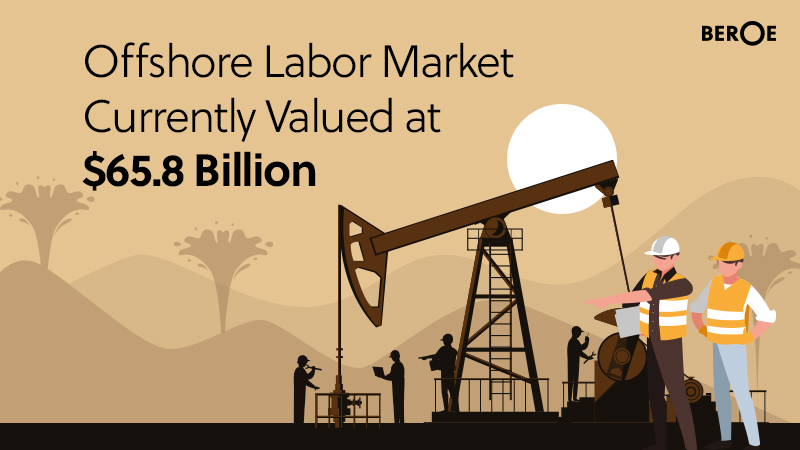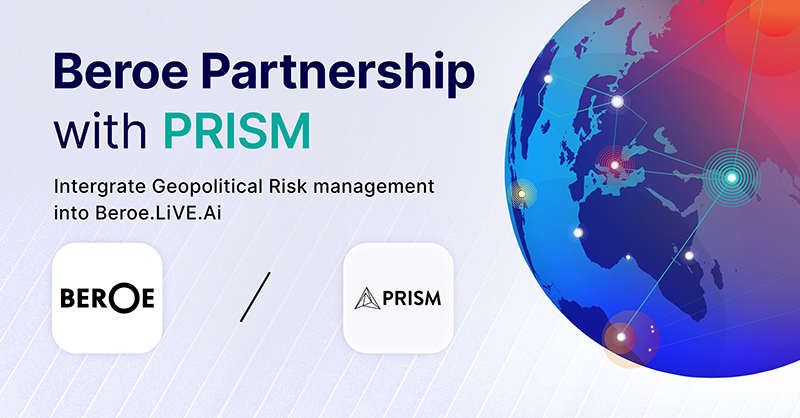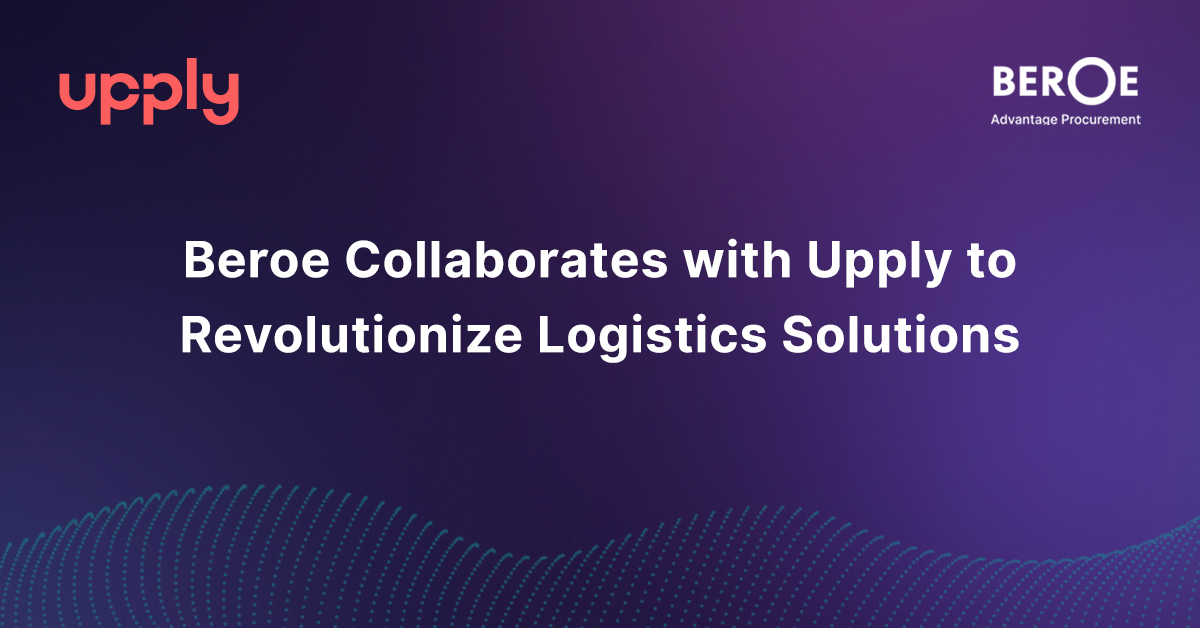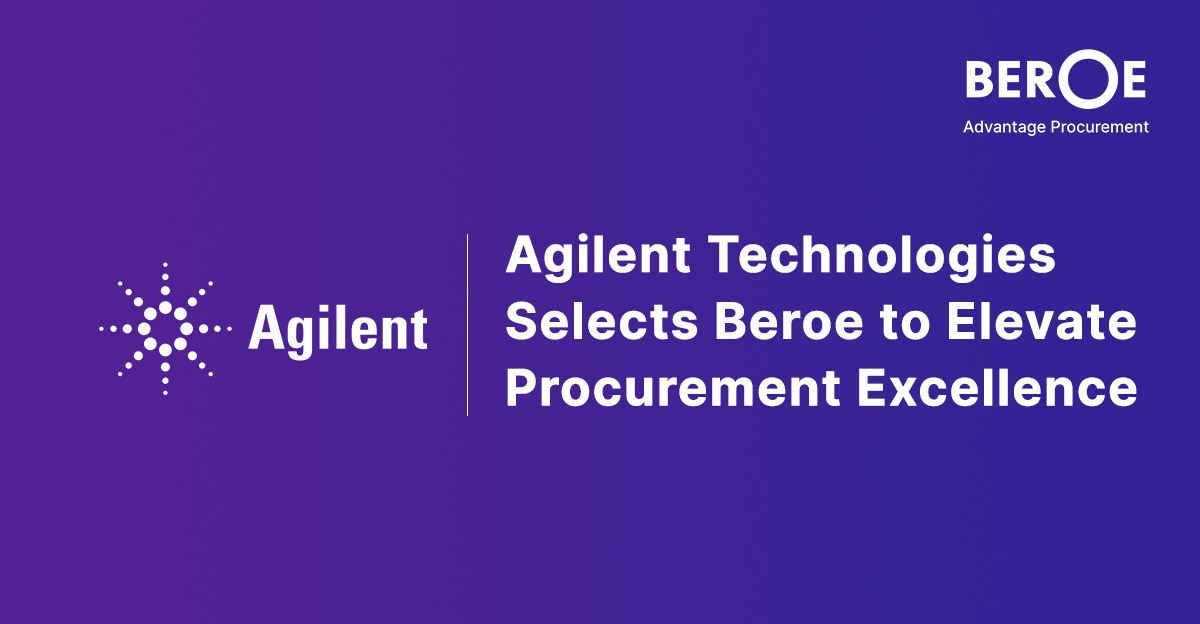Offshore Labor Market Currently Valued at $65.8 Billion, Says Beroe Inc
Source: PR Newswire

RALEIGH, North Carolina, October 9, 2019 - The global oil and gas offshore labor market is estimated to reach a value of $76.8 billion by the end of 2022, growing at a CAGR of 5.3 percent, according to Beroe Inc., a procurement intelligence firm. The global offshore workforce is estimated to expand from 1,040,000 in 2019 to 1,260,000 in 2021, following the recovery of crude price and the implementation of new offshore E&P activities.
The global offshore labor demand is the highest in the APAC with 35 percent of the total global demand, followed by the Middle East for 20 percent, Europe for 17 percent, LATAM for 11 percent, North America for 9 percent and Africa for 8 percent. The demand for offshore labor is driven primarily by E&P activities, majorly in APAC, followed by ME, and Europe. The UK, Germany, and China would are expected to require more labor to cater to their offshore wind projects in the coming years.
https://www.beroeinc.com/category-intelligence/offshore-labor-market/
Beroe, which is based in North Carolina, further stated that procurement experts can access this report on its recently launched market intelligence platform Beroe LiVE: live.beroeinc.com
An offshore well continues to produce the comparatively same volume of crude for 10–15 years, whereas onshore wells reach approx. 50–60 percent of production in the first year. This would ensure long demand for offshore labor compared to onshore. New deep water discoveries are expected to drive the demand for the offshore labor market along with offshore developments in wind farms. The market faces challenges from prevailing low oil spend due to slow recovery of crude oil prices, stringent regulatory policies, and health and safety measures to be followed on offshore platforms that limit the number of labor on platforms.
Recent developments in drilling, such as increased drilling speed by approximately 100 times, would bring down the drilling time by 50 percent. This would bring down the labor count and requirement. Automation and efficient drilling rigs have reduced the actual need for field hands-on offshore platforms. The access coverage of offshore wells to reservoirs is superior to onshore rigs. Hence, the number of actual wells drilled would be lesser compared to onshore.
Key Findings:
- Offshore labor engagements are usually for the long term, as offshore wells have the potential to produce for 10–15 years continuously. Hence, buyers can negotiate supplier contracts and engagement models.
- Among the supplier engagement models, master vendor model is most commonly used model for industrial skills, vendor-neutral/open bid is used majorly to manage large, global staffing programs, the primary supplier sourcing model is the mostly used model overall and structured tier sourcing model is commonly used to source highly skilled labor.
- Nearly, 70 percent of the world’s oil & gas production comes from mature fields. This high number of maturing fields would demand production and related activities on offshore, to tap the maximum reserves, in order to meet the increased demand globally.
- Since labor has to stay in rigs for a longer duration, companies prefer to keep the crew to a minimum, in order to bring down the expenses on accommodation, food, etc. The work–life balance for the labor is also often compromised, as the working environment is challenging for the labor crew.
- Although the crude oil price has recently witnessed recovery, the offshore E&P activities are expected to boom globally toward the end of 2019, following the decision of OPEC and allied parties to curb oil production.
The research methodology adopted for the report included:
- Experts with twenty years of domain experience
- Interaction with buyers
- Inputs from supply chain partners
Different sourcing models are adopted for each spend category by oil companies; however, in the future, large organizations are expected to opt for a hybrid or blended model, due to increased focus on developing a holistic approach for offshore labor role, which could be a temporary or permanent one. The hybrid or blended model will provide a single point-of contact for all categories of labor across upstream, downstream, and midstream.
The report also includes:
Market Analysis:
- Global Market Overview for Offshore Labor Market
- Regional Market Overview for Offshore Labor Market: US
- Market Drivers and Constraints
- Porter’s Five Forces Analysis: Global
Offshore Labor Salary:
- Offshore Labor Salary
Sourcing and Engagement Models:
- Sourcing Models
- Engagement Models
Supplier Analysis:
- Key Regional Supplier Portfolio
About Beroe Inc.:
Beroe is the world's leading provider of procurement intelligence and supplier compliance solutions. We provide critical market information and analysis that enables companies to make smart sourcing decisions—leading to lower costs, greater profits and reduced risk. Beroe has been providing these services for more than 13 years and currently works with more than 10,000 companies worldwide, including 400 of the Fortune 500 companies.
To learn more about Beroe Inc., please visit: http://www.beroeinc.com
Media Contact:
Rob McMurtrie
rob.mcmurtrie@beroe-inc.com
Related News
View all
Beroe introduces on-demand geopolitical risk analysis through PRISM enabling C-Suite to protect against ongoing supply chain disruptions

Beroe and Upply Combine their Expertise to Revolutionize Logistics Solutions
